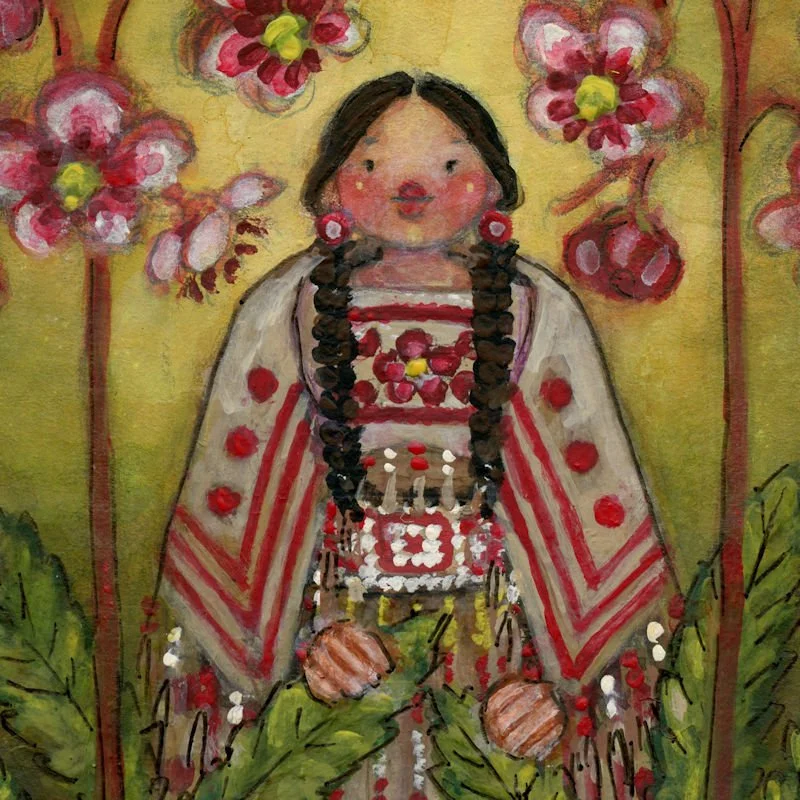Pipsissewa
Pipsissewa, Prince's Pine, Chimaphila umbellata 🌸
She grows 4-10 inches tall in small patches in dry woodlands. Her name Chimaphila, "winter-loving", refers to her evergreen leaves. Her name Pipsissewa is from a Cree word, pipsiskwee, meaning "it breaks into small pieces", for her traditional use in treating kidney stones. She has antibacterial and diuretic properties~ teas and poultices made with her leaves were (and still are) used by Indigenous peoples all over North America, folk healers, and herbalists, to treat a variety of ailments. Her wintergreen-scented leaves can also be used as flavoring for candy and root beer, and in Mexico, they are used in the preparation of navaitai, an alcoholic drink made from sprouted maize. Although her leaves are green year-round, she takes a significant portion of nutrition from fungi in the forest soil around her. Here, her dress is traditional 18th century Woodland Cree.


